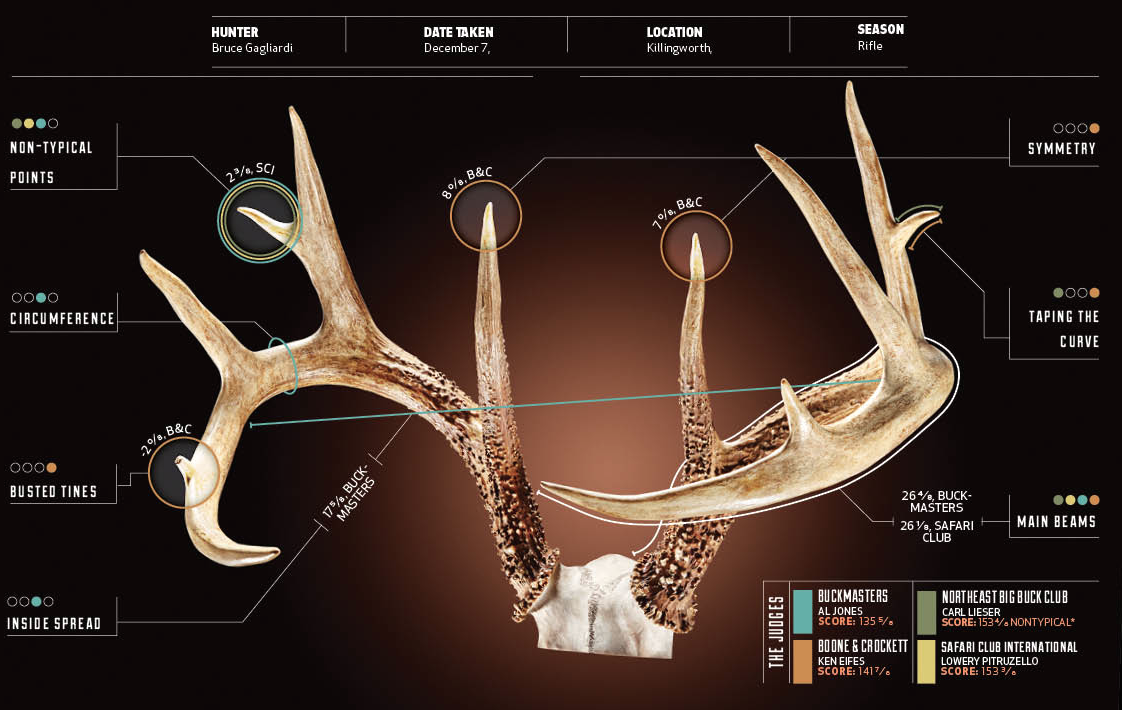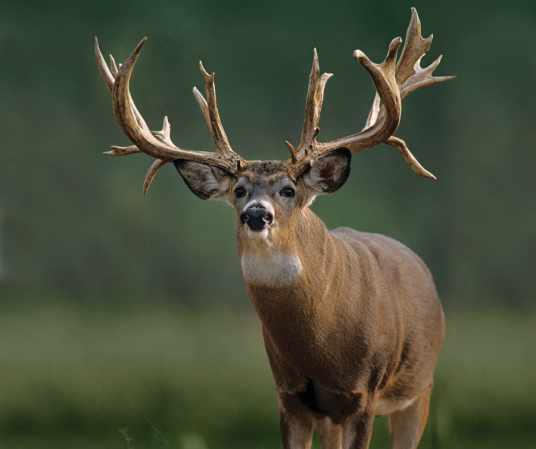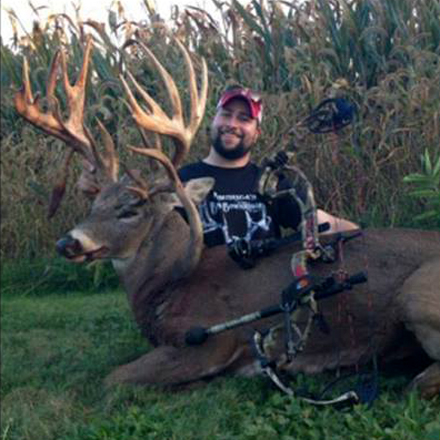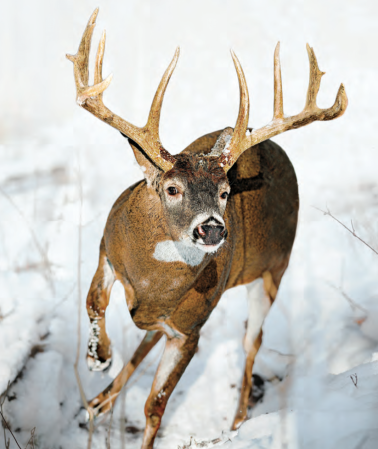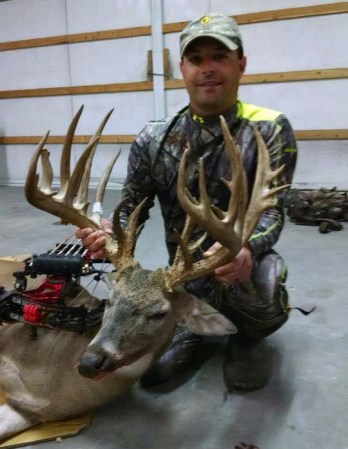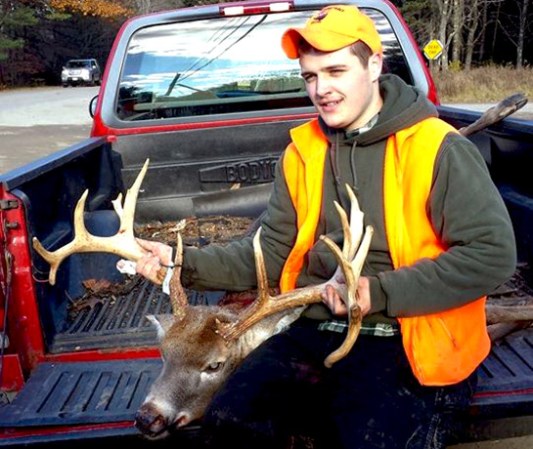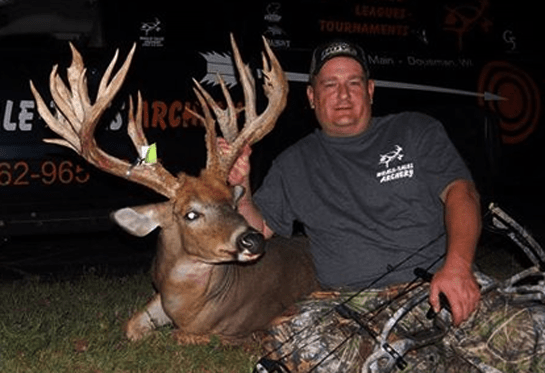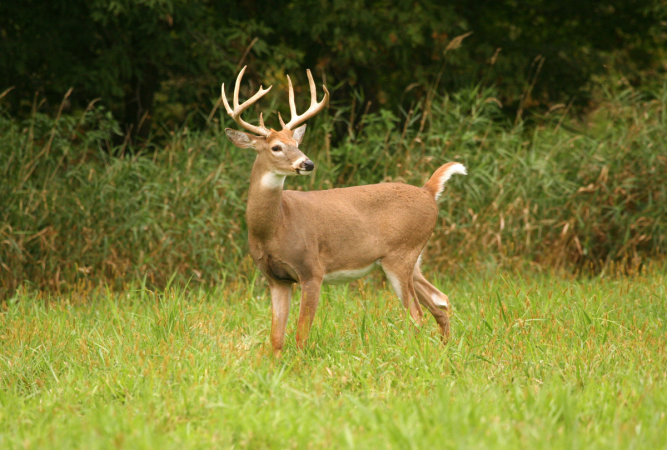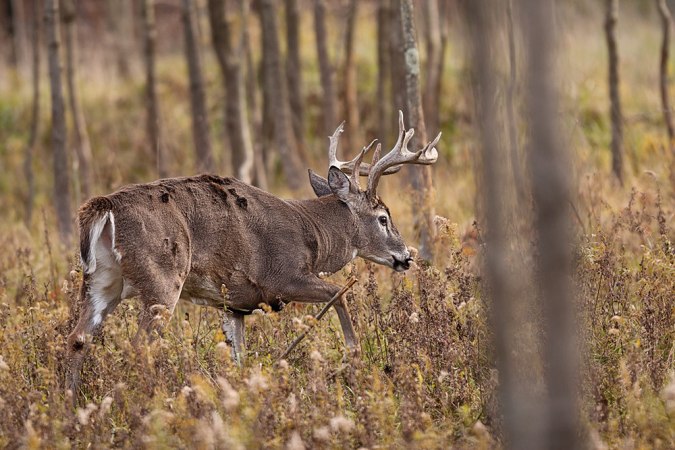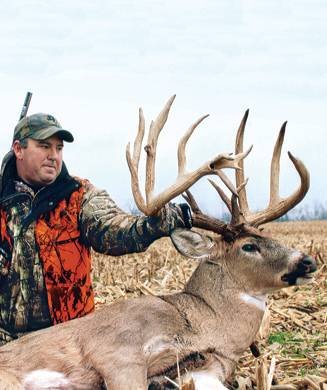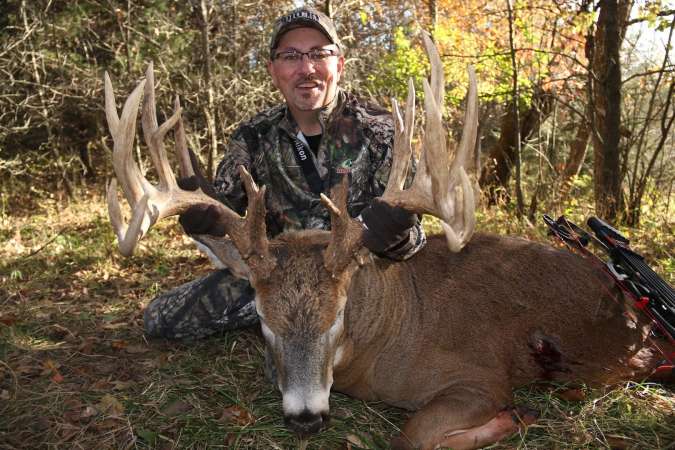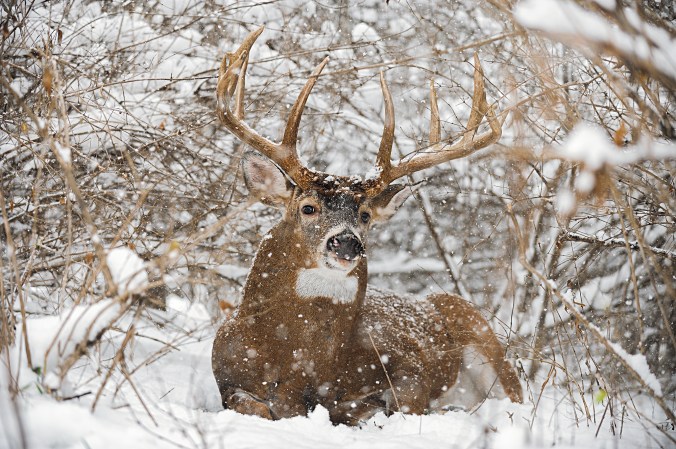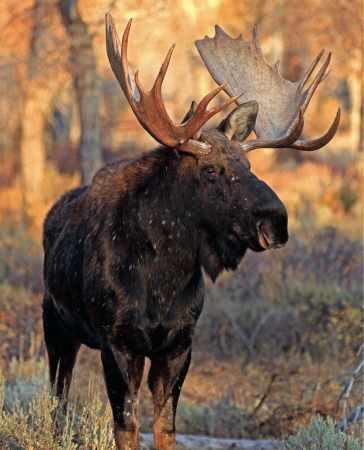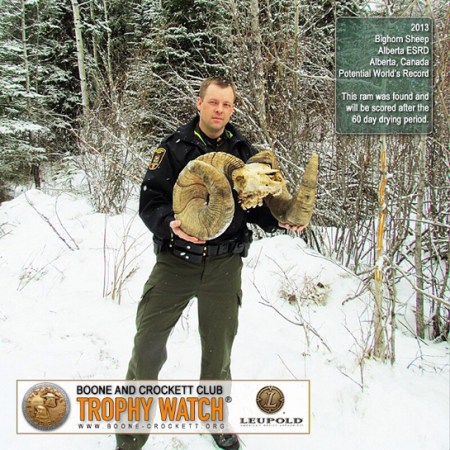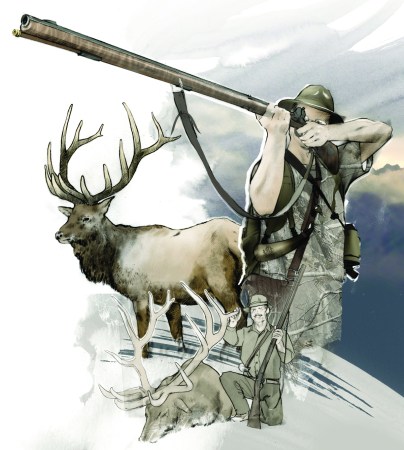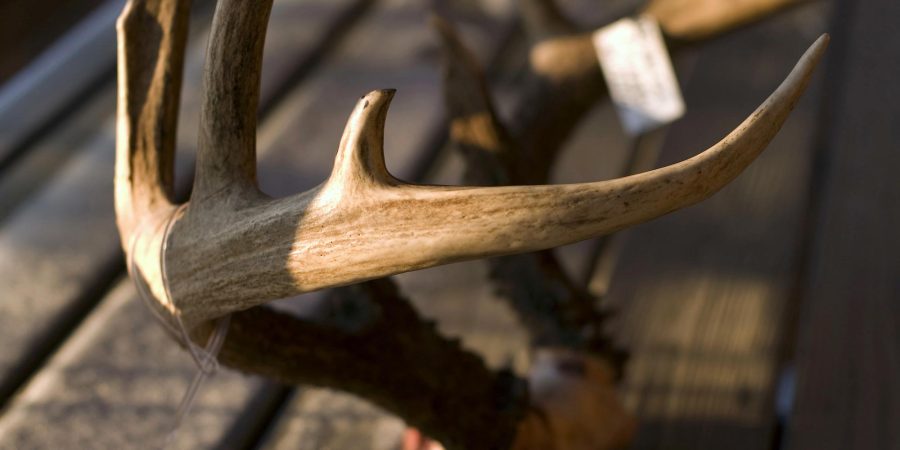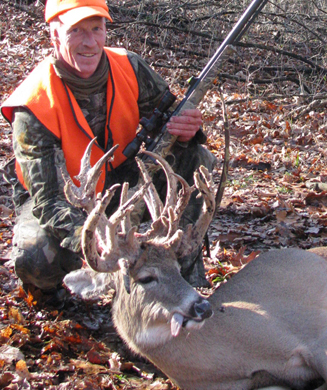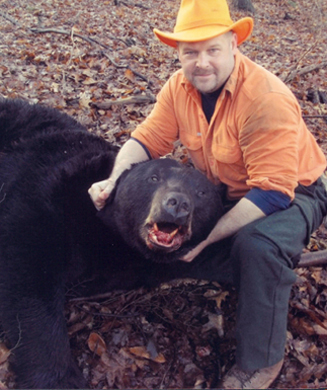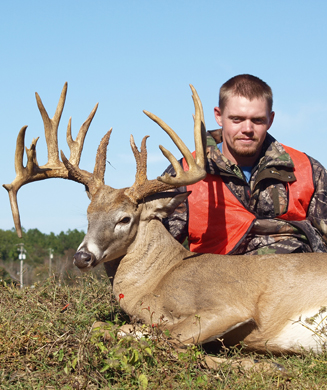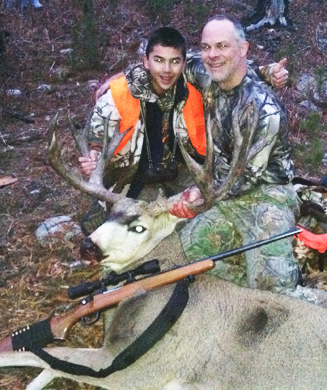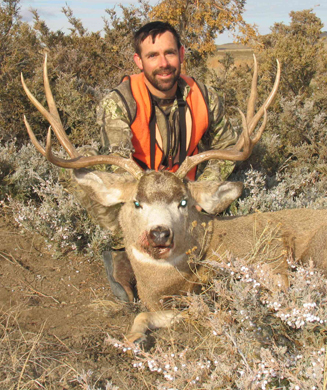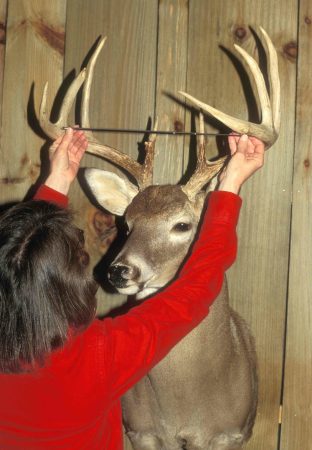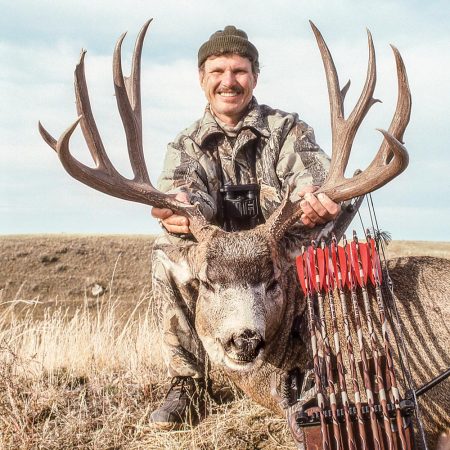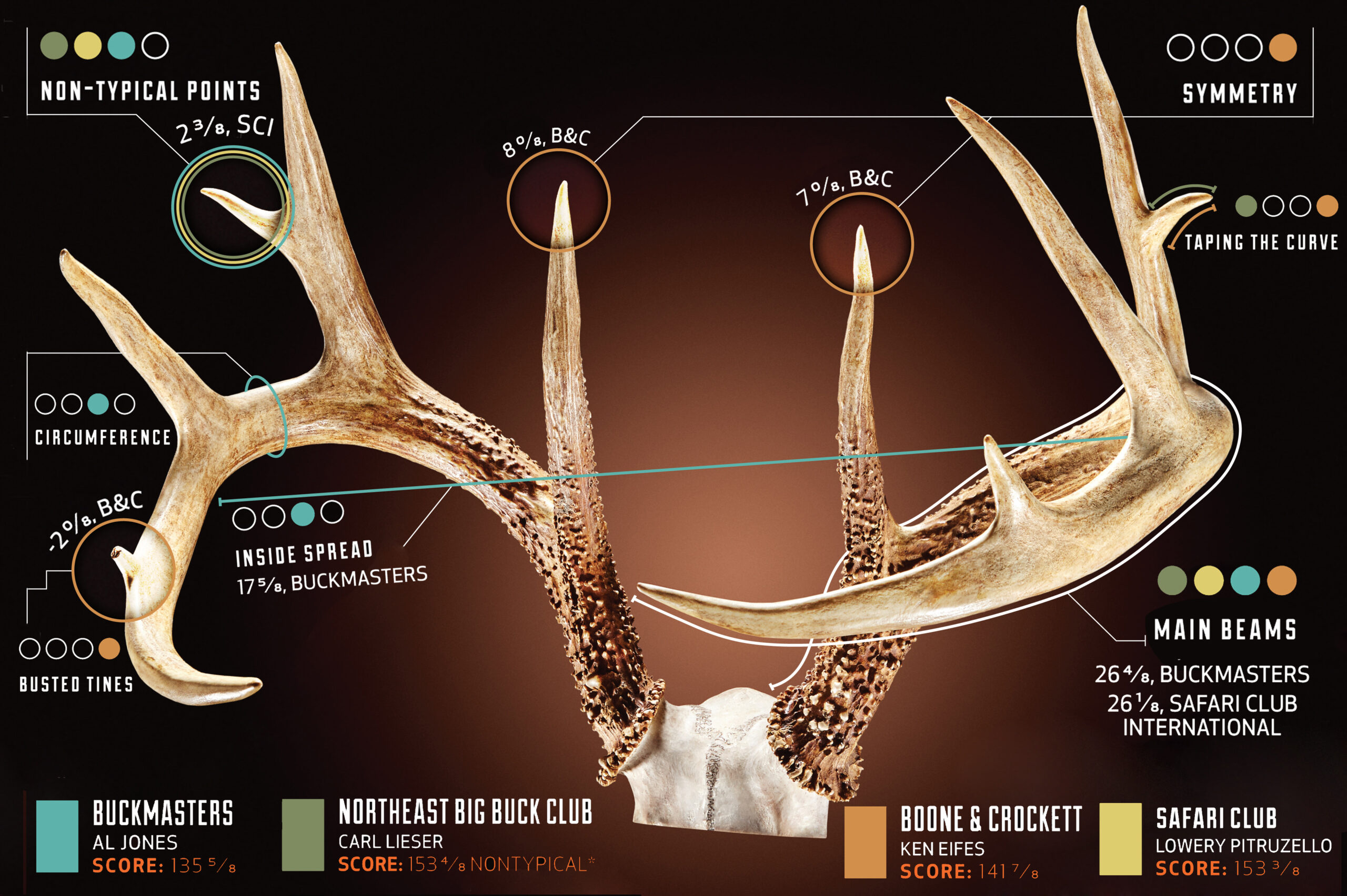
Click to enlarge, and make sure your pop-up blocker is disabled for this page. This rack is from a rifle-season deer taken by hunter Bruce Gagliardi on Dec. 7, 2013, in Killingworth, Conn. Photo by Jarren Vink, r__ack courtesy of Northeast Taxidermy
“What’s he score?”
That question will be asked countless times this fall as hunters gather around hanging bucks, counting points and guessing spreads. But the answers depend on who you ask. There are many different antler-scoring clubs across the country, and each utilizes its own method. To illustrate some of the main differences (and similarities), we had scorers from four different record-keeping organizations independently measure the same rack. All came up with different final net scores.
The takeaway? If you want to judge the true quality of a buck, you might try a measurement other than inches.
How Each Feature is Scored
Non-Typical Points
All of the clubs except B&C tally non-typical points toward gross and net scores. B&C deducts non-typical points from the gross score, which means the kickers on the G2s cost the rack 4 inches total.
Busted Tines
Broken points can kill a rack’s B&C score. This one didn’t measure an inch, so it wasn’t counted, and it lost 2 inches here because of the resulting lack of symmetry. The other clubs don’t take deductions.
Circumference
All clubs take four circumference measurements on each main beam. Because there was a broken point, Buckmasters used the third circumference measurement twice—giving the buck more inches for having a broken point. The other clubs consider the broken tine an “indicator” for circumference measurements.
Inside Spread
Buckmasters is the only club that doesn’t count spread toward the overall net score (which is why that score is substantially lower). The rationale? The club measures bone, not “air.”
Symmetry
To the hunter’s eye, this is a super-symmetrical buck, but it suffered 3 ⁵⁄₈ inches of deductions with B&C for unsymmetrical points (8 ¹⁄₈ inches of deductions overall). The brow tines are an inch different.
Taping the Curve
Scorers are taught to give every inch possible to a rack. On this kicker, NBBC measured the outside of the curve, giving it an extra ¹⁄₈ inch (all measurements are rounded to ¹⁄₈).
Main Beams
All the clubs measure main beams the same way, but there was still deviation: a 3⁄₈ inch difference between the highest and lowest measurements. Every measurement involves a degree of interpretation.
The Results
Buckmasters
Judge: Al Jones
Score: 135 5/8
Northeast Big Buck Club
Judge: Carl Lieser
Score: 153 4/8 non-typical*
Boone and Crockett Club
Judge: Ken Eifes
Score: 141 7/8
Safari Club International
Judge: Lowery Pitruzello
Score: 153 3/8
*NBBC and the B&C let the hunter decide if his rack is entered in the typical or non-typical record books.
Corrections: A previous version of this story inccorectly stated that B&C requires 15 inches of non-typical points in order for a rack to be scored as a nontypical.
_ _

